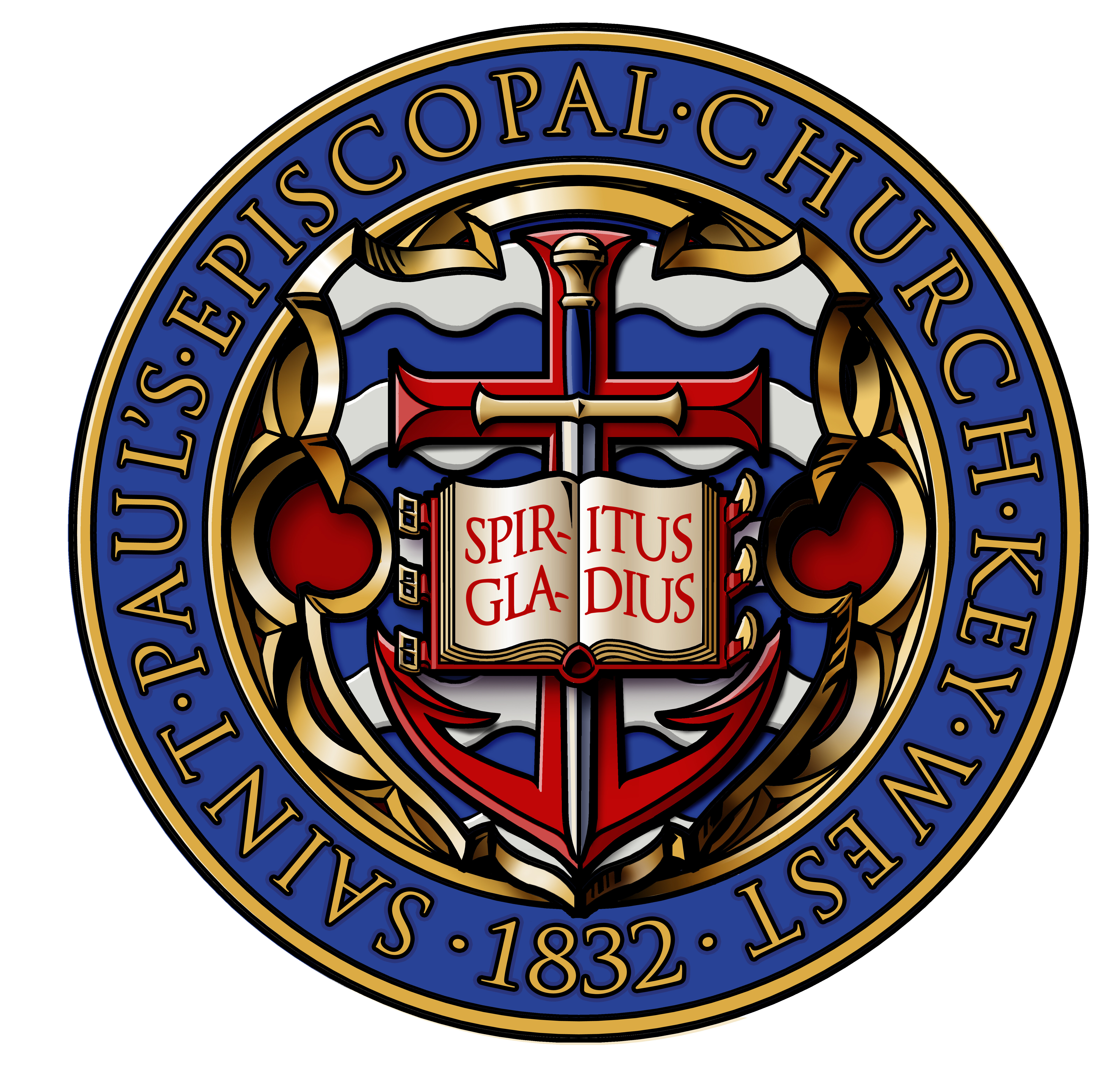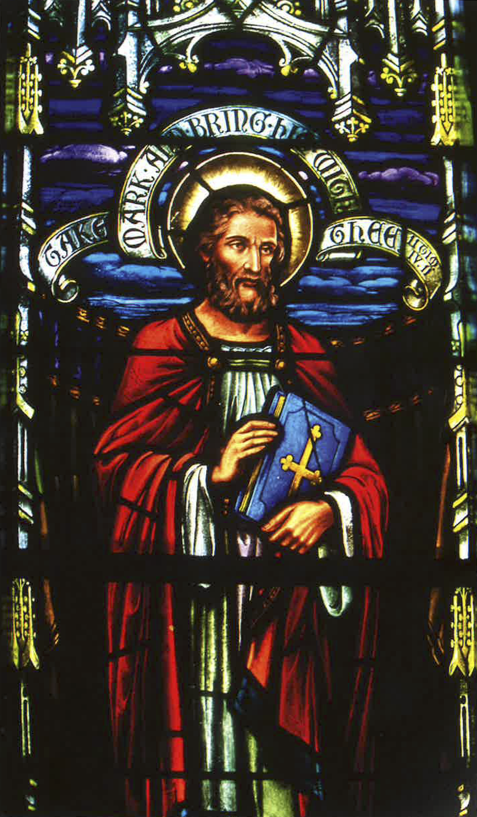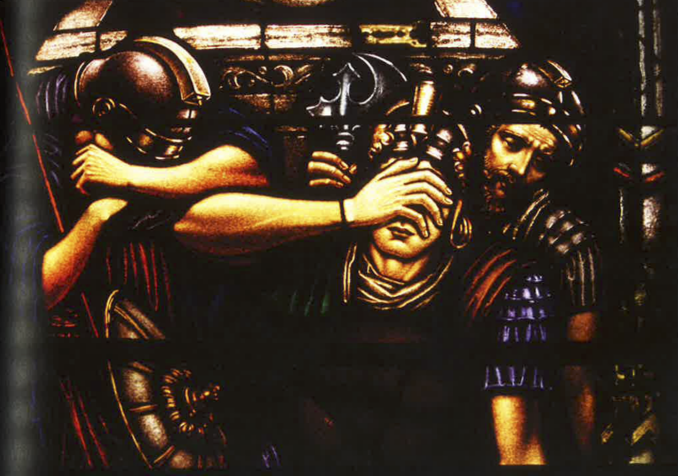Introduction and Acknowledgments
Key West lies in the path of dangerous hurricanes. Three former buildings of St. Paul's Episcopal Church have been destroyed, two by hurricane; one by fire. There is no assurance that the present and fourth church building can withstand the velocity of high winds and the strength of a tidal surge fi the island is in the direct path of a major storm.
The Golden Cockerel is a documentary on the stained glass windows of this historic church. It serves not only as a detailed inventory of the windows, but also as a record of the past history of its congregation, residents of the island community. It accents the importance of focusing attention on preservation, and records a priceless heritage for future generations.
The work is not designed to be read from cover to cover. Each page is complete within itself, containing the story of the window and the documentary history of the window.
This book could not have been written alone. There weret hose who cheered its progress and those that gave the help needed for documentation. Dr. Herman K. Moore provided a computer which made the work easier. Tom Hambright of the Florida Division of the Monroe County Library gave untiringly of his time and expertise. Bob Jones, member of the Stained Glass Association of America, kept in touch with valuable information that could not have been obtained without him. When the church building was being repaired, photographer Scott Caldwell climbed the scaffolding and provided detailed photographs of outstanding beauty. - Winifred Shine Fryzel
Foreword
For Ed Swift, President of Historic Tours of America®, the decision to publish The Golden Cockerel came from his deep appreciation for Winifred Shine Fryzel and her special generation of local residents whose memories of the island reach way beyond his, and from his personal passion for the preservation of the history of Key West. When he asked me to edit this remarkable book, I was honored.
One afternoon, as I sat in the quiet coolness of St. Paul's Church, manuscript in hand, surrounded by the glorious medium of color and light, watching a few tourists walk through in respectful silence and wondering where to start, a very personal connectivity came to light.
Sitting there, just steps beyond the hubbub of Duval Street, I felt surrounded by a transcendental aura I experience any time I am in an "old world" church where I am innately comfortable with the familiar. As a child I visited numerous European Gothic cathedrals and recall being awed by the towering coldness, yet warmed by the incredible colored light streaming through the enormous glass walls. I used to imagine what ti must have been like in 12th and 13th centuries, when life was so hard and grim, to enter a church and in its overwhelming vastness feel the presence of God.
As I looked closely at the windows in St. Paul's, I came to appreciate them as Winifred Fryzel intended: as works of ecclesiastic art and as a documentation of the history of the people of Key West, from pioneer to present. The Golden Cockerel is as much a story of the people of Key West as it is of the Old Testament prophecy and New Testament stories told through its lovely windows.
Studying the windows, stories from the Bible, learned in my own Anglican upbringing, came back to me.
Reading the names on the memorials on each window, familiar Key West names such as Porter, Lowe, Curry, Bartlum and Bethel brought to mind the island's history of sea captains, wreckers, cigar makers, lighthouse keepers, spongers, doctors and merchants, whose roots were in New England and the Bahamas.
Matching window to manuscript, I learned of some less familiar parishioners such as the Shacklefords, a black family with roots in pre-civil war Missouri, who came to Key West sometime prior to 1874. In windows donated by the Flower Guild, whose flowers for the altar came from the ladies' own gardens, I thought of the warm bonds formed by work in the church for a collective purpose. In the Baptistry, I was moved by the windows poignantly dedicated to young lives lost. Taken together as a body of work the windows, as memorials, serve as a reminder that the church was the social, as well as spiritual center of the parishioners' lives, and very often held the only records of their genealogy. St. Paul's Episcopal Church was, and still is, a diverse family, welcoming the wealthy, the humble, the distinguished and the anonymous.
In our mission of placing Winifred Fryzel's impeccable research on the windows as art and as memorials within the context of the church as a whole, we have taken the liberty to elaborate on some of the text. We have included a brief history of St. Paul's Church; added to the story of stained glass; expanded on the symbolism of the title; supplied additional information on the history of Key West; and, where appropriate, included edification of the symbolism.
In order to enhance the use of the book as a companion piece to viewing the windows, we have changed the window number sequence from the original manuscript. The story of the windows begins with those on the lower level of the Baptistry and moves in numeric sequence around the church in a counterclockwise direction. Once back at the Baptistry, the sequence resumes on the upper level.
Our thanks are extended to David Eyer for his informative tour of the church and input, and to The Reverend David Wilt, for his gracious support of our role in this endeavor.
As an Episcopal church in an island setting, with a history dating back to its first settlers, St. Paul's has aspecial quality. While the church's traditional Anglican rituals are deeply rooted, just as the stained glass windows down the length of the nave were designed to open to the tropical breeze, its doors are open to all who choose to enter. St. Paul's reflects and is deeply connected to the island community it serves.
Winifred Fryzel's labor of love allows us to experience each window on three levels: the aesthetic, the spiritual and the historic. If all those who enter the church can leave with a sense of all three, our collective objective will have been accomplished. - Barbara Hayo
Source: The Golden Cockerel: The Art, Symbolism & History of the Stained Glass Windows, St. Paul's Episcopal Church, Key West, Florida by Winifred Shine Fryzel.
While this information about our history is freely shared, please consider making a donation to St. Paul's so that we may continue our work, including the stewardship of our beautiful grounds, buildings, and windows.




Login To Leave Comment